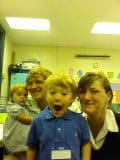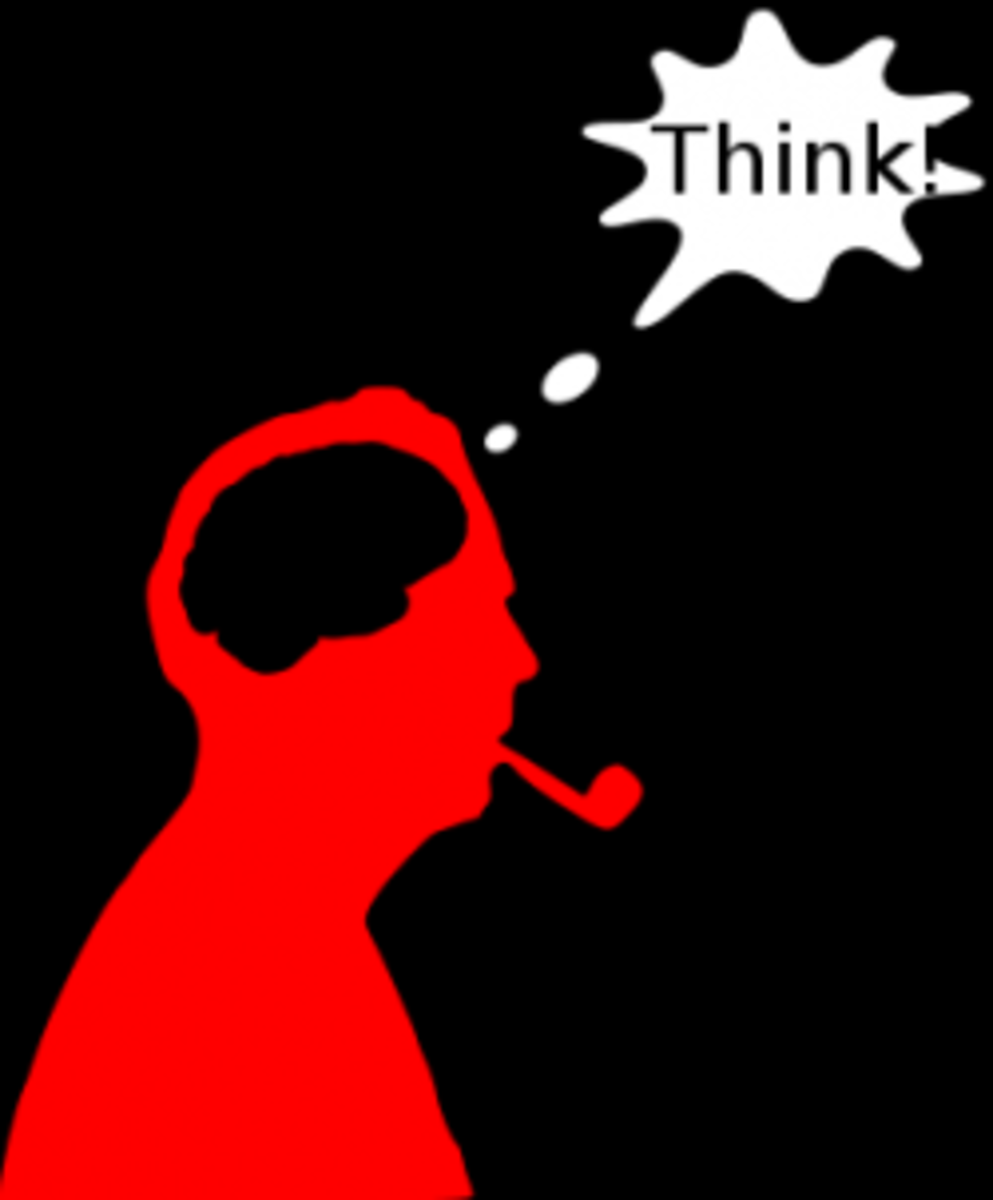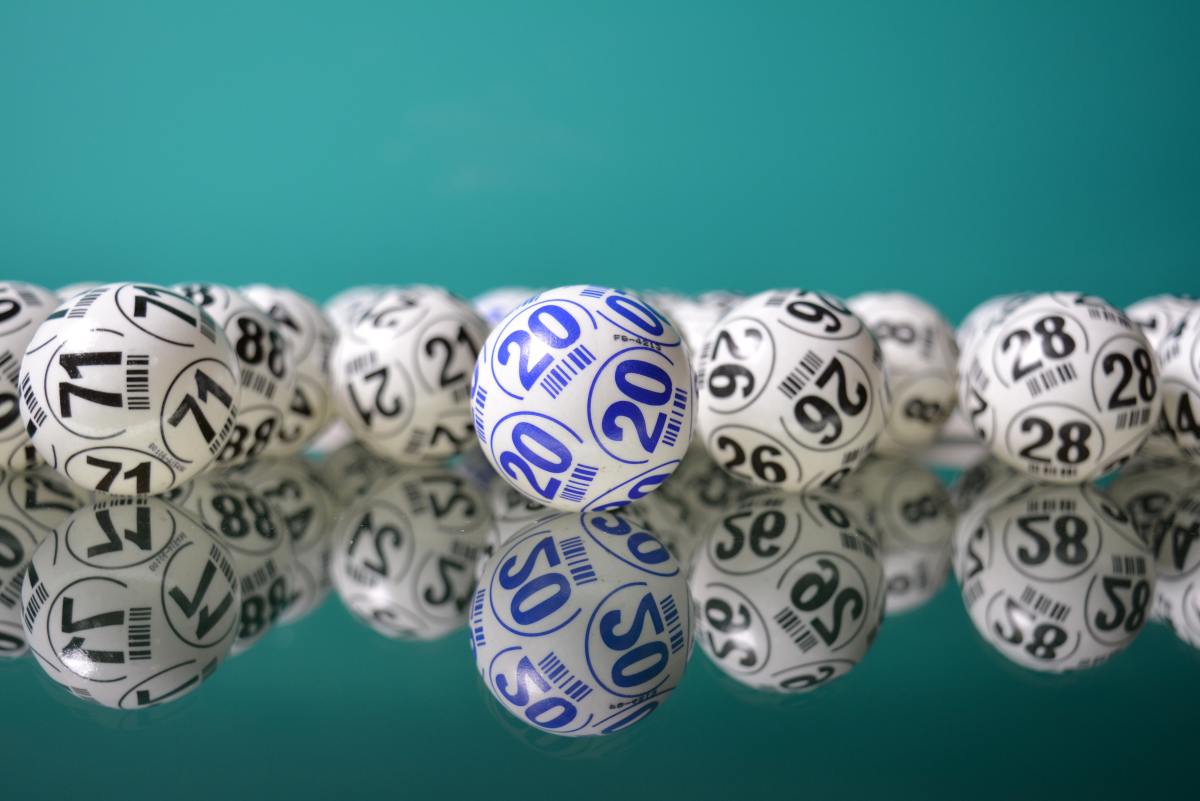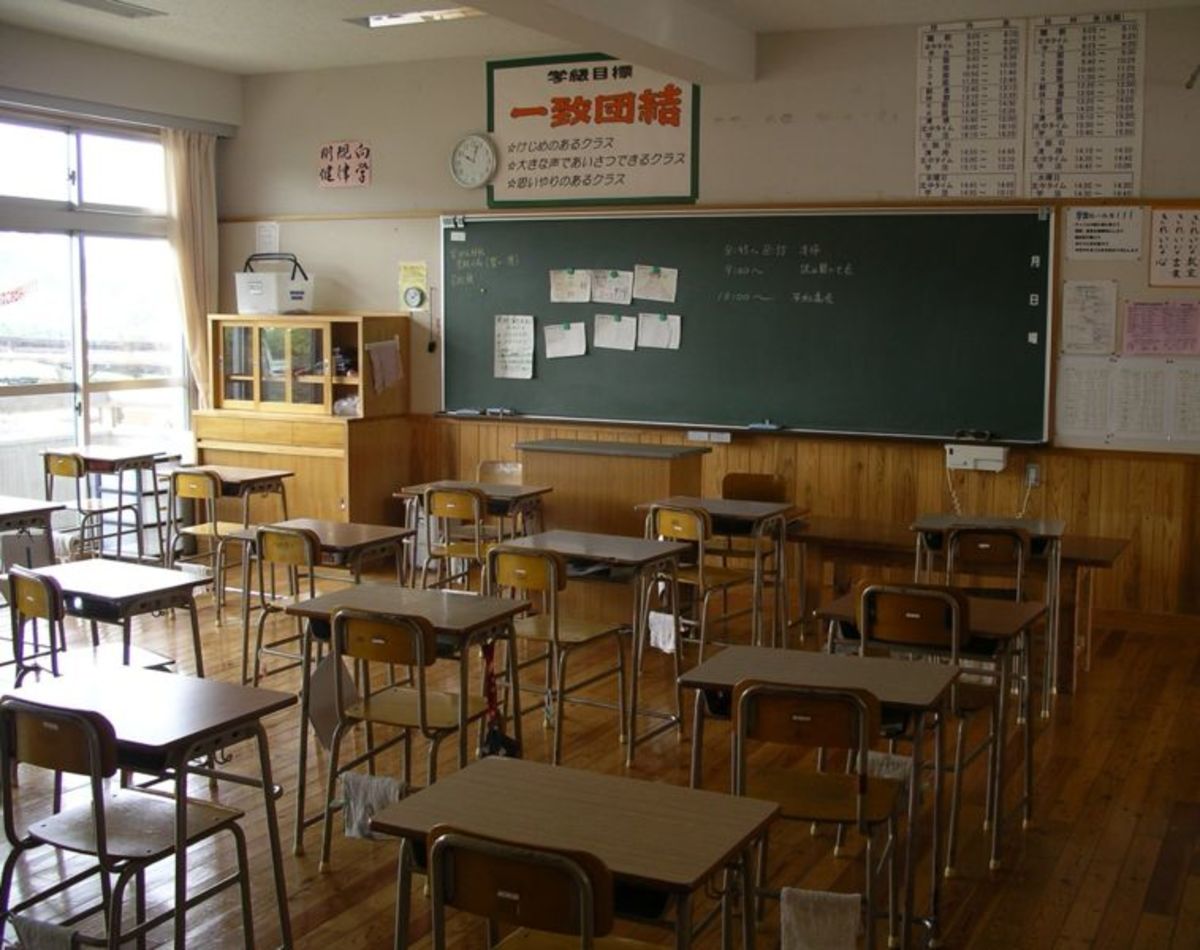Preschool Education: Teaching Children How To Read Through Games
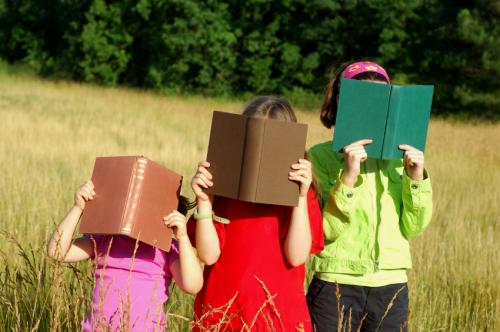
In the years I've been with Dynamic Minds Learning House, I have taught reading to many preschool children. One thing I have learned is that kids are more receptive to learning when they think they are just playing and having fun.
I will share with you three of my favorite games and activities for reinforcing reading skills, including how to make the materials and how to play the game. I didn't "invent" these activities, and neither did our school. These games were simply adapted from existing games to suit our purpose. It's really very simple. Once you get the hang of it, you can make your own activities, too.
GO FISH!
The real Go Fish is a card game that uses a standard 52-card deck, but our version utilizes special cards that you will have to make. Don't worry, it's very easy to make that even a child can do it. Here's what you will need:
- construction paper, cartolina, or specialty boards (like the ones you use to make calling cards)
- scissors or a cutter (an adult will have to do the cutting)
- marker or pen (alternatively, you can make them on the computer and print them out instead of writing with a marker)
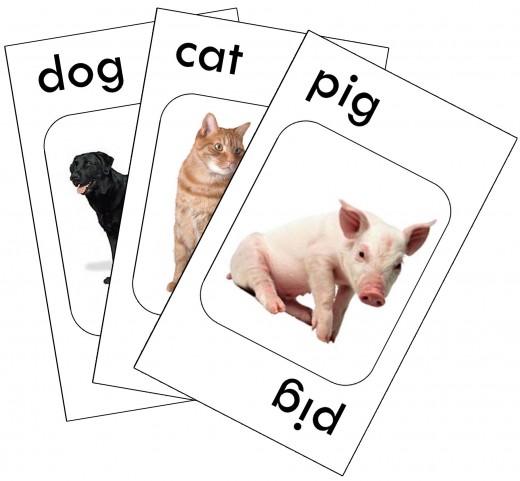
How to make Go Fish cards
Follow these steps if you're making your playing cards by hand:
- Cut
the construction paper, cartolina, specialty boards, or bond paper into
card-sized pieces. I like to use specialty boards since they are
stiffer and won't tear as easily when handled by children. You will
need an even number of cards, how many though is up to you. I like to
make many cards so we don't run out of cards to fish during the game.
- Write
a word on the front of each card following the format of a deck of cards. You can
also draw its picture in the middle of the card to make your activity target both reading skill reinforcement and vocabulary development. (See photo of the Go Fish cards I made on the computer.) If you're teaching kids how to
read consonant-vowel-consonant words, then use CVC words such as cat,
dog, pig. Make two identical cards for each word.
If you're making your playing cards on the computer, you'll need to print them on whole sheets of construction paper, specialty board, or bond paper, so don't cut them into pieces before you start. But if you're using cartolina, you'll need to cut the cartolina into bond-paper sized pieces to make it fit in your printer.
How to play Go Fish
Two or more players can play this game, depending on the number of cards you made. The object of this game is to be the first to use up all your cards by matching the identical ones.
Mechanics of the game:
- Have the kids sit on the floor forming a small circle or around a table if you like. Deal five to seven cards to each of the players (depending on the number of players and the number of playing cards you have). Put the remainder of the cards face down in the middle of the circle or table, spreading them out in a non-orderly pile like fish in the ocean.
- Let the kids look at the cards in their hand to see if there are pairs. All pairs (identical cards) should be put face up in front of the player who formed it. Only the cards with no pairs will be left in play.
- The player whose turn it is to play asks another player if he or she has a certain card. For example, if it is Ashley's turn to play, she will ask, "Jamie, do you have a cat?" Jamie must hand over the card of the cat if she has it. Ashley will then put the pair of cats face up in front of her and take another turn.
- If the player being asked doesn't have the card being asked for, he or she tells the one asking to "Go fish!" In our example above, if Jamie doesn't have the card with a cat on it, she tells Ashley to "Go fish!" and Ashley must draw a card from the "ocean of fish" and the turn moves on to the next player. (If the card Ashley picked happened to form a pair with one of the cards in her hand, she puts them face up in front of her and the turn still moves on to the next player.) A player can only ask for a card that is in his or her hand.
- Players continue to take turns asking for a card until one player has paired all of his or her cards.
You can also play variations of the game. For example, instead of the game stopping after one player has paired all his or her cards, you can have the others continue until there are no more cards in the "ocean". And instead of the winner being the first one to pair all his or her cards, you can have the one with the most number of pairs at the end of the game as the winner.
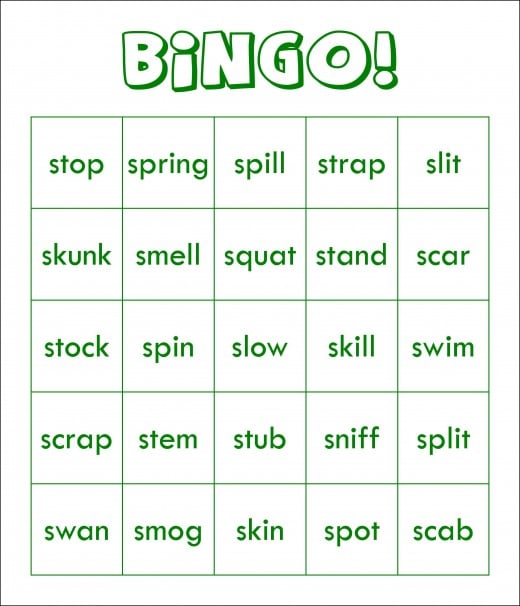
BINGO!
Everybody knows how to play Bingo, right? Well, our version has words on it, not numbers. To make Bingo cards, you will need:
- bond paper, construction paper, or specialty boards
- pen (not necessary if you're making the cards on the computer)
To play Bingo, you will need:
- crayons
- or small poker chips (if you want to reuse your Bingo cards after the game)
How to make Bingo cards
Follow these steps if you're making your Bingo cards by hand:
- Draw a 5x5 grid on the paper or board. Make sure the spacing is even. Write BINGO! at the top.
- Write a word in each square on the grid. If your teaching kids how to read words with S-blends, then use words with S-blends such as spin, scat, swim. (See photo of the S-blends Bingo card I made on the computer.)
- Make as many Bingo cards as there are players. Each Bingo card should contain the same words but in a different order.
To make the call-out cards, write the words you put in the Bingo cards in small pieces of paper and put them in a box or jar. Bingo cards and call-out cards are just as easy to make on the computer. Simply type them and print.
How to play Bingo!
Any number of players can play this game provided that you made enough Bingo cards. The object of the game is to form a row of five words either horizontally or vertically. The first one to do so is the winner.
Mechanics of the game:
- Have the kids sit on the floor or at a table and give each one a Bingo card and a light-colored crayon or some poker chips to mark the words with.
- Randomly pick a call-out card from the box and read it out loud. Have each player find the word you called out in his or her Bingo card and mark it with a crayon or a poker chip. Since each word called out is in the Bingo card (in different positions), all players should be able to mark one word after each call out.
- Continue calling out words until a player has marked a row of five words either horizontally or vertically and shouts "Bingo!" He or she is the winner of the game.
Bingo can also be played with variatons such as having kids play by pairs, or giving each child a turn to pick a call-out card.
MEMORY GAME
Memory game is a fun game that will enhance memory as well as reinforce reading skills. This game is usually done with pictures, but our version uses words. To make the memory game cards, you will need:
- construction paper, cartolina, or specialty boards
- pen (or you can make it on the computer)
- scissors
How to make Memory Game cards
Making Memory Game cards is very simple. All you need to do is cut the construction paper, cartolina, or specialty board into small pieces and write a word on the front of each. As usual, use words that fit your lesson. If you're teaching long vowel words, use words such as cape, meal, pole. Also, if you're going to make it on the computer, print out the words first before cutting up the cards.
Just like with Go Fish, you need to make two cards for each word, and you also need to make sure the backs of all the cards are identical. There should be no distinuishing marks on them. Use fewer pairs for younger kids, the older ones can handle more cards.
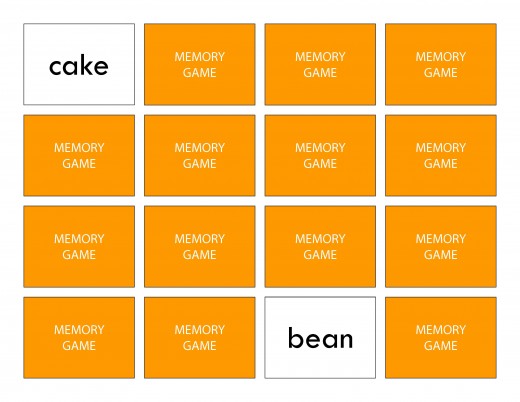
How to play Memory Game
Memory Game can be played by two or more players. The object of the game is to collect as many pairs as possible before the cards run out.
Mechanics of the game:
- Have the kids sit around a table. Lay all the cards face down on the table in the pattern of a grid.
- Players take turns flipping open two cards at a time to see if they match. Players must read the words out loud for the other players to hear.
- If the two cards match, the player who opened them gets them and puts them face up in a pile in front of him or her. He then takes another turn. (If he gets another pair, he gets yet another turn, otherwise the turn moves on to the next player.)
- If the two cards don't match, the player who opened them has to flip them face down again and the turn moves on to the next player.
- Players take turns until there are no more cards left in the grid.
Variations for Memory Game can also be played. Instead of a player getting another turn if he makes a match, for example, you can move on to the next player. Or you can have children play in pairs.




